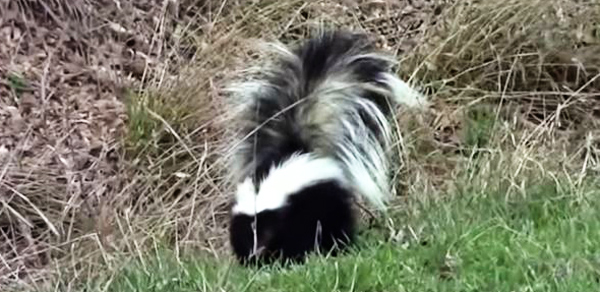- info@wildlifeanimalcontrol.com
Call us for help in your town
Wildlife Control Education
The Mating Habits of Skunks
Skunks have
gotten themselves a bad reputation over the
years. They are often thought of as very smelly
pests, although when you know more about them,
the more you can see that this isn’t the whole
truth. There is so much more to them than that!

The stinky scent that skunks are so famous for
emit occurs when males try to attract females
that might not be ‘in the mood’. It’s their own
way of ‘having a headache’! They send out the
scent to get rid of potential unwanted suitors.
Skunks are polygamous, which means that the
males will successfully mate with more than one
female during the mating season – which is why
the females need this repellent tool.
Skunks are very near-sighted, but have a strong
sense of smell which is why this particular
method of communication is so effective. The
other ways that skunks talk to one another are
stomping their feet, hissing, clicking their
teeth, growling, screeching, squealing or
grunting.
The main mating seasons for striped skunks are
February and March. They have a gestation period
of 60 to 75 days, which means that the babies
are often born in March and June. Spotted skunks
breed later in the year, with some even waiting
until the autumn. Another interesting fact about
skunk pregnancy is that the babies use a
placenta to help them grow, in the same way
human babies do.
When skunks aren’t breeding, they are very
solitary animals. Although when it’s cold they
may gather in their dens for warmth. They don’t
hibernate; just snuggle to keep them heated.
When a female skunk is due to give birth, she
will retreat to one of these dens to house her
litter of four to seven babies (which are
referred to as ‘kits’).
These kits are born deaf, blind and covered in a
layer of soft fur. They actually develop the
ability to produce their own musk at
approximately 8 days old (although they can’t
spray it until a few weeks later) – which is
before they even open their eyes, at 3 weeks
old.
They won’t actually leave the den with their
mother until they are 6 to 8 weeks old (although
only at night – as skunks are nocturnal
creatures), which is about the same time that
the babies are weaned onto adult food. They then
stay with their mother until they are ready to
mate themselves, which is usually when they are
about one year old. The male plays no part in
raising the children. Skunks generally live to
be 2 or 3 years old in the wild – although in
captivity, they have been known to live until
they are 10!
Go back to the How to get
rid of skunks home page.
Need skunk removal in your hometown? We service over 500 USA locations! Click here to hire us in your town and check prices - updated for year 2020.

















